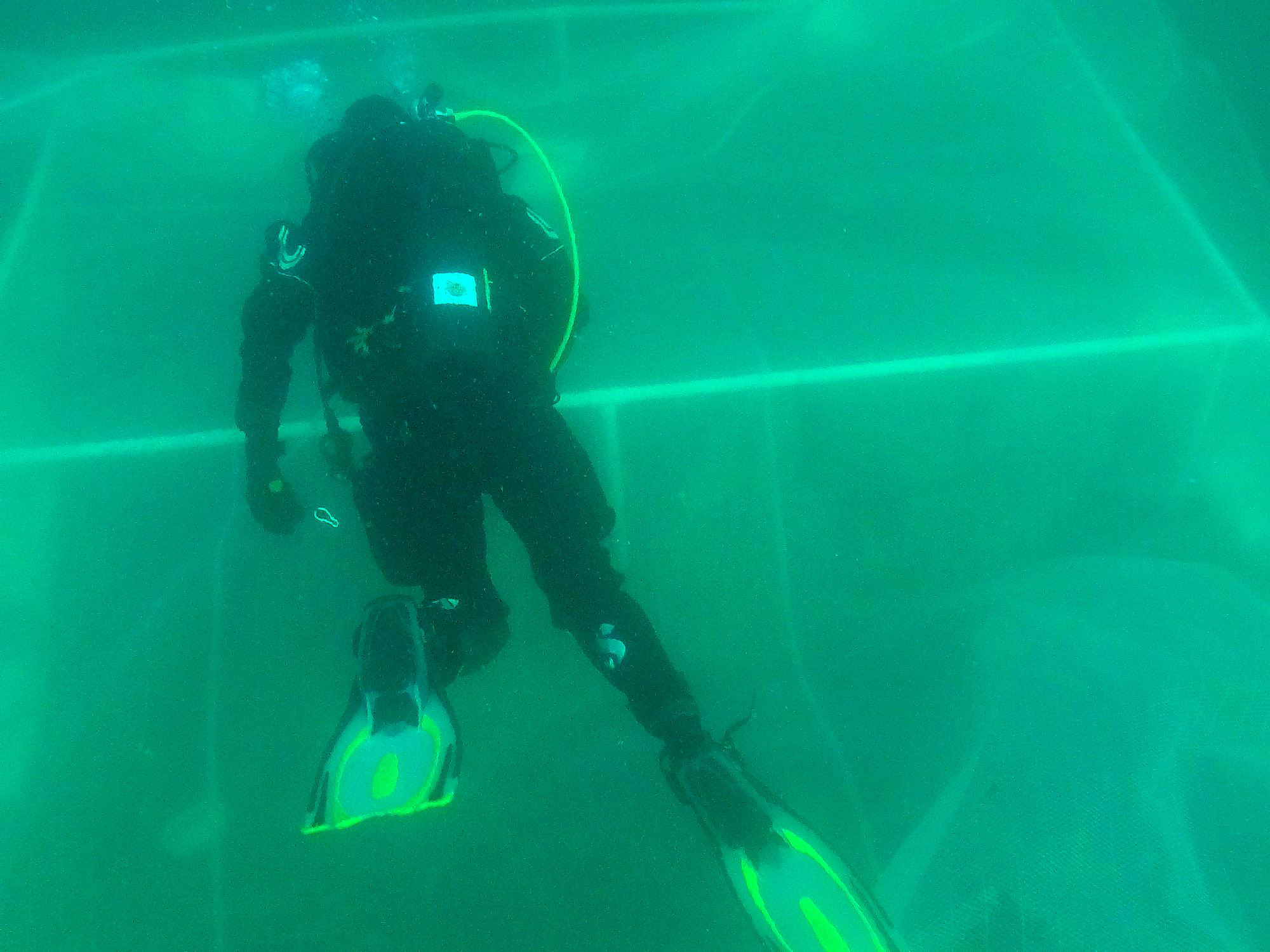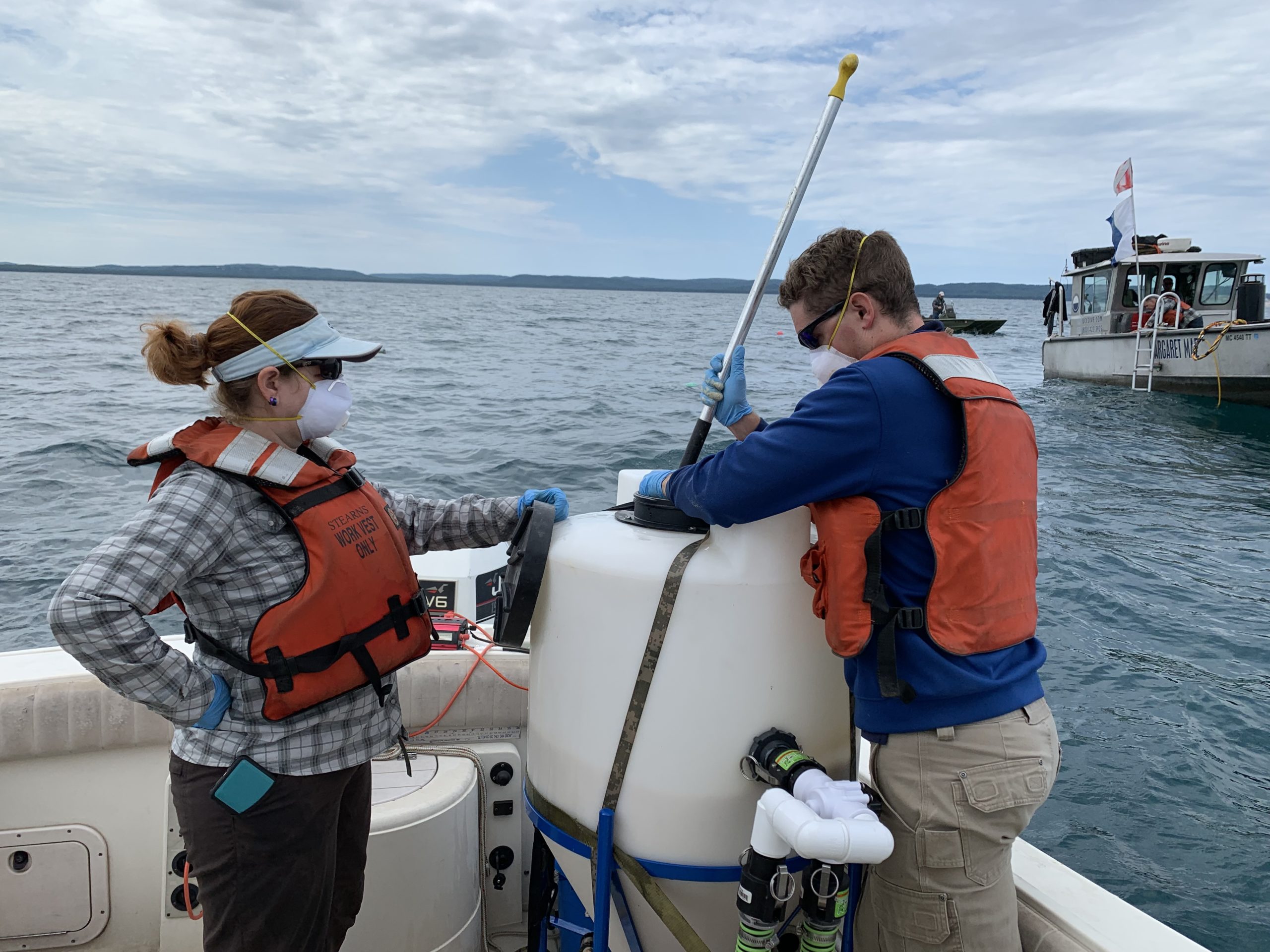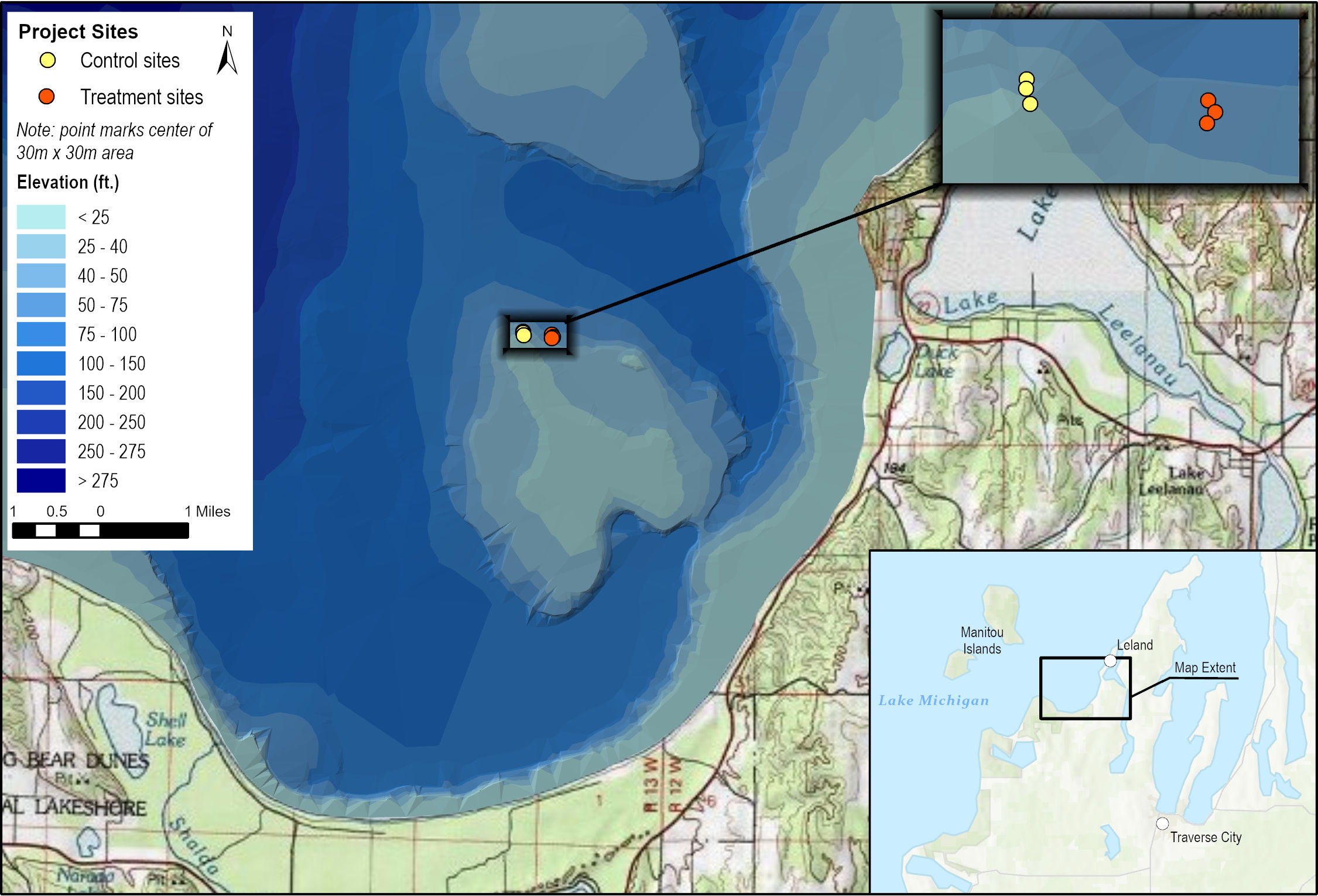Research and Projects
Dreissenid Mussel Control Demonstration Project
In 2019, the Invasive Mussel Collaborative coordinated a collaborative demonstration control project for invasive mussels at Good Harbor Reef in Lake Michigan. Project partners include the National Park Service, U.S. Geological Survey, National Oceanic and Atmospheric Administration, Michigan Department of Natural Resources, Michigan Department of Environment, Great Lakes, and Energy, Great Lakes Commission, Great Lakes Fishery Commission, the University of Wisconsin – Milwaukee, University of Michigan, LimnoTech, Marrone Bio Innovations, Underwater Construction Corporation, and the Great Lakes Environmental Center. This project expands existing National Park Service and Michigan Department of Natural Resources projects to remove invasive mussels in an effort to reduce harmful effects to the local ecosystem in the Sleeping Bear Dunes National Lakeshore and Good Harbor Reef areas near Traverse City, MI. The project also aligns and addresses objectives in the Invasive Mussel Collaborative Strategy to Advance Management of Invasive Zebra and Quagga Mussels which offers a roadmap to improve invasive mussel control in the Great Lakes region.
Project Activities & Outcomes
The Good Harbor Reef project complements the National Park Service’s ongoing work by using a different control method, the highly selective toxicant Zequanox®. Zequanox® is a U.S. EPA registered molluscicide that is specific to zebra and quagga mussels, is approved for use in open water lakes, and has been safely used in multiple lakes across the Great Lakes region. This project utilized an innovative method of applying Zequanox® by injecting it underneath a series of anchored tarps placed directly on the reef.
Zequanox® application took place in early August of 2019 over a span of three treatment days. Monitoring occurred prior to the treatment as well as one day, one week, two weeks, and one month post-application. Preliminary results from this initial monitoring show dreissenid mortality rates to be as high as 97% after treatment. A final report from these initial monitoring efforts will be published by LimnoTech by spring 2020. Additional monitoring will take place during the spring of 2020 to further study long-lasting effects of Zequanox® and its ability to control dreissenid species.

Zequanox® is pumped below a heavy duty sealed enclosure that remains in place for up to 8 hours. (Photo provided by University of Wisconsin-Milwaukee)

Brandon Ellefson, LimnoTech, and Carolyn Link, Marrone Bio Innovations, prepare Zequanox® solution for application (Photo provided by Erika Jensen/Great Lakes Commission)

Project site pre-treatment (Left) and post-treatment (Right) (Photo provided by University of Wisconsin-Milwaukee)
Invasive Mussels Impacts at Good Harbor Reef
Lake Michigan is heavily infested with invasive quagga mussels, which impact Great Lakes fisheries, clog up water intakes for industrial and municipal water users, degrade beaches, crowd out native species, and disrupt the aquatic food web. At Good Harbor Reef, quagga mussels also block available spawning sites along the reef floor for whitefish, lake herring, lake trout, and other native aquatic species. The negative impacts of invasive mussels extend to the Sleeping Bear Dunes National Lakeshore, where dead algae and mussel shells are creating a nuisance and a hazard for park visitors when they wash up on beaches. In addition, the area has experienced problems with the botulism toxin – likely driven by dead algae and introduced into the food web by invasive mussels – leading to the death of fish and water birds.
Resources & Publications
Zorinsky Lake Zebra Mussels-Summary Poster
US. Corps of Engineers
Zequanox Application Technique Pilot Study on Lake Erie
Megan M. Weber, Marrone Bio Innovations; Michigan Department of Environmental Quality
Zebra Mussels Invade Ontario Waters
Ontario's Invading Species Awareness Program
Riley T. Lovejoy, Alyssa N. Kandow, Jennifer G. Howeth

